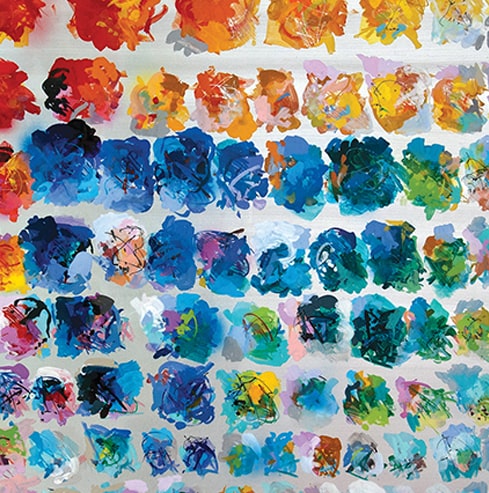Depending on who you ask, the meanings behind art and music can be many things. Considerations can be made for philosophical, etymological, and historical definitions, and some blend them all as they talk about these forms of expression.
The good thing about all of this is that much of the definition’s pillars are subject to interpretation, as are the underlying pieces. In other words, though a few of the working interpretations are covered below, feel free to continue your research until you have settled on a perception that suits your sensibilities most aptly.
What Defines Art and Music?
The basic etymological definition comes from the Latin word “ars”, which roughly translates to skill or craft. Of course, this is still very broad. Therefore, it helps to try to contextualize things a bit.
This is one of the fundamental points of confusion and even conflict. Some would say art is a superset while music is a subset. In other words, music is a form of art. Therefore, you would provide a working definition for art, and music would simply be a child element covered under the umbrella of the same definition.
On another note, art is one of many forms of emotional expression. The aim is to put a piece together that evokes an emotional response from an audience. Using this definition, you could also say that music is also listed as another form of emotional expression, bearing the principles of harmony, unity, rhythm, and balance.
That’s not to say some of those properties are not present in art, but the categorization does not necessarily allow for the interpretation of art via the sense of hearing. Instead, sight and touch are the primary drivers, while music appeals to that hearing.
How Are Art and Music Related
From the previous points, there are essentially two working classifications that lead to two different relationships. Using the first where music is a subset of art, you get a parent and child relationship. Music needs art to exist, but it does not necessarily hold the other way around. Similarly, while the development of art may influence music, the inverse is not necessarily true.
Looking at the other classification that separates the two, you get a different relationship entirely. Here, both music and art are on equal footing. Therefore, it’s that’s much more likely for one to have a hand in the other’s development and vice versa.
This is not in the literal sense, as you cannot impose color onto music. However, music does have tones, and artistic patterns could be used to shape the way these are composed.
On the flip side, a musical piece could lead to a certain emotion being communicated. An artist, upon experiencing the same feelings could end to use colors and patterns that can recreate feelings on sight.
Is Music a Form of Art?
With all that has been said before, this question, while it often comes up becomes a bit of a moot point. There is no definitive answer here. What interpretation do you choose to accept?
Should you say that art is the overarching construct, then yes, music is undoubtedly a form of art. If not, then both are simply different forms of expression that are just as high as each other in the hierarchy.
Does Art Influence Music?
This is probably the first area in which both sides can agree. Whether you think music is independent of art or a part of it, there is no denying that art is going to have a profound effect on music.
However, music has the distinct advantage of being continuous and fluid. Make no mistake, art is outstanding, but it often appears static in the absence of optical illusions. There aren’t necessarily highs or lows as you hear in music, though one piece of art can certainly provide a series of different ideas and contrasting feelings.
What this means is that music can adapt techniques introduced in the world of art and provide a voice to a visual. It wouldn’t be the first-time occurrence and may even help in providing some much-needed artistic context.
Do Music and Art Go Together?
Yes, the two blend extremely well and often can support each other greatly. For example, you may see an art exhibit with a musical score meant to reinforce the environment that the art creates.
It’s a simple question of finding pieces under both classifications that agree with each other and represent the union well. It’s just as easy to choose art and music that does not sync very well, creating anything short of a disaster.
About Calman Shemi
Many would describe Calman Shemi as an artist, and he most certainly is. However, he does not necessarily refer to himself that way, instead of calling himself a composer of shape, color, and energy.
Looking at what his artistic expertise has led him to develop in the world of pottery, sculpture, and even painting, it’s hard to disagree with the sentiment.
Calman Shemi has been passionate about what he does for many years, being born in Argentina in 1939 and graduating from the School of Sculpture and Ceramics at the tender age of 20 years old. You needn’t look further than his impressive collections to see what his masterful path has yielded.
Conclusion
Art and music have an undeniable relationship, even if it’s not easy to agree on what that interaction may be. You got a look at two potential viewpoints that have very different implications and are now encouraged to form your own opinion.




